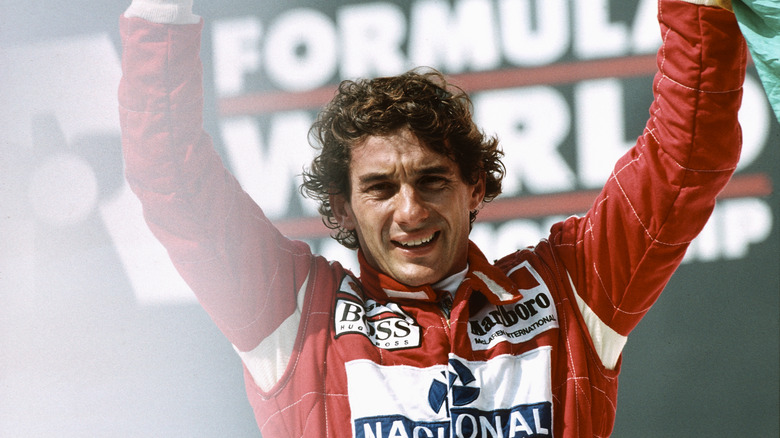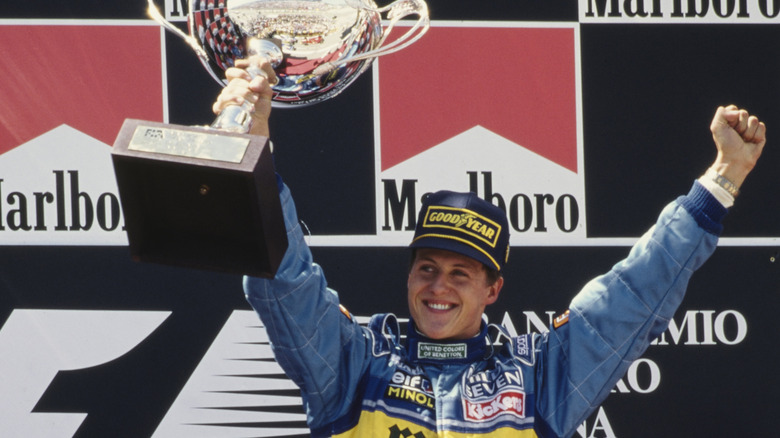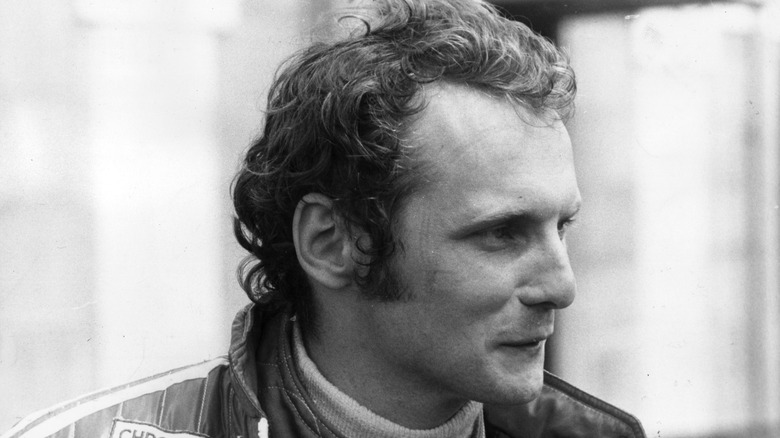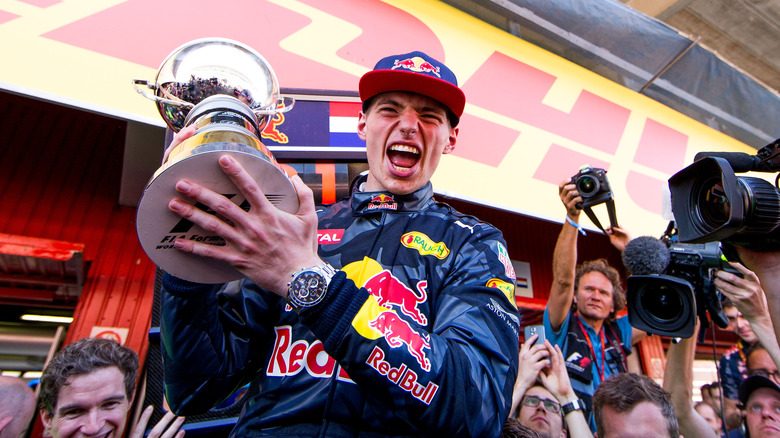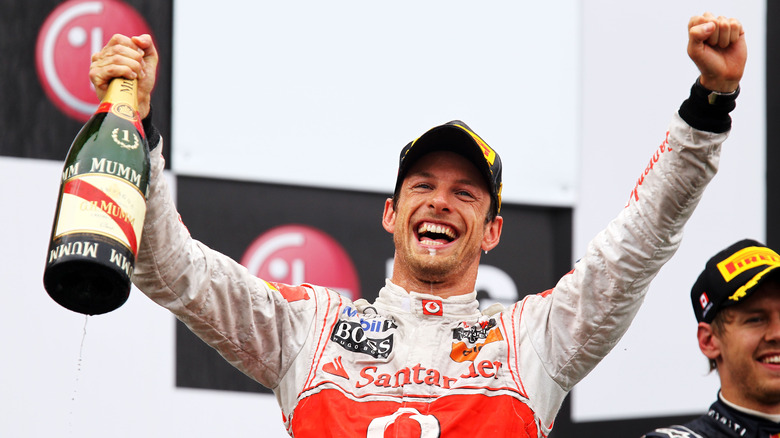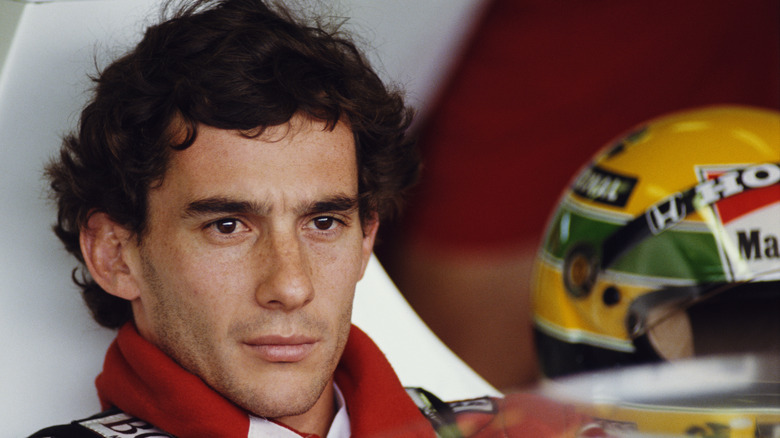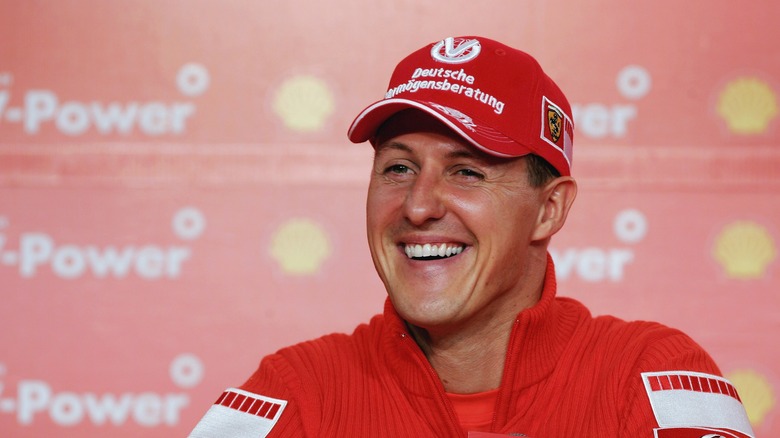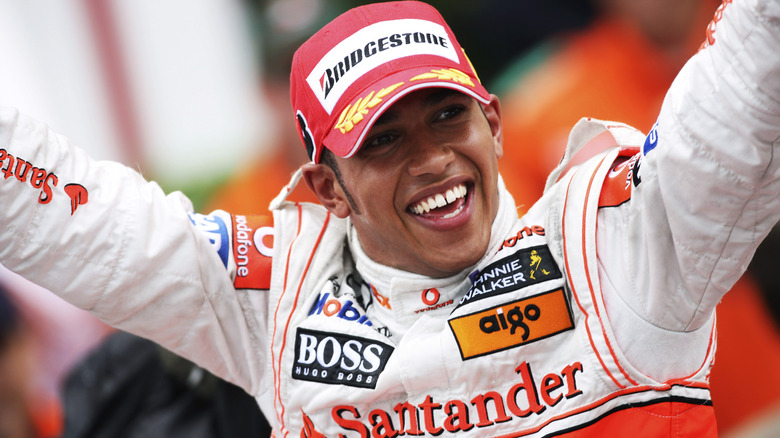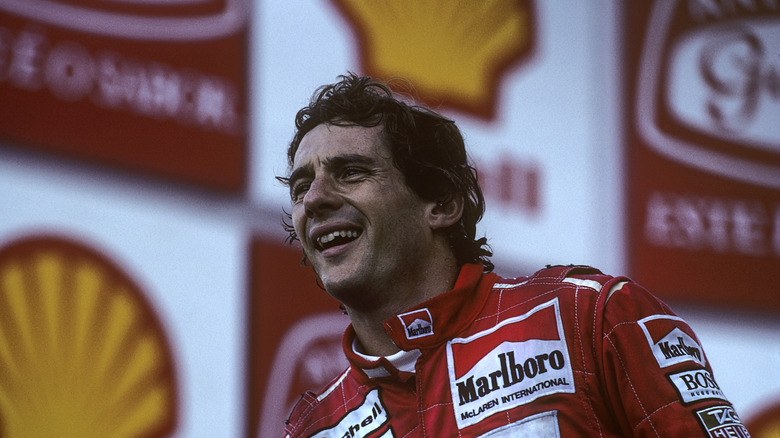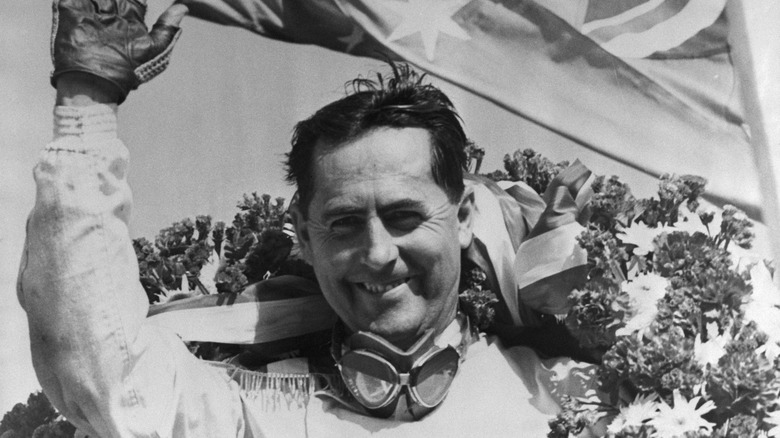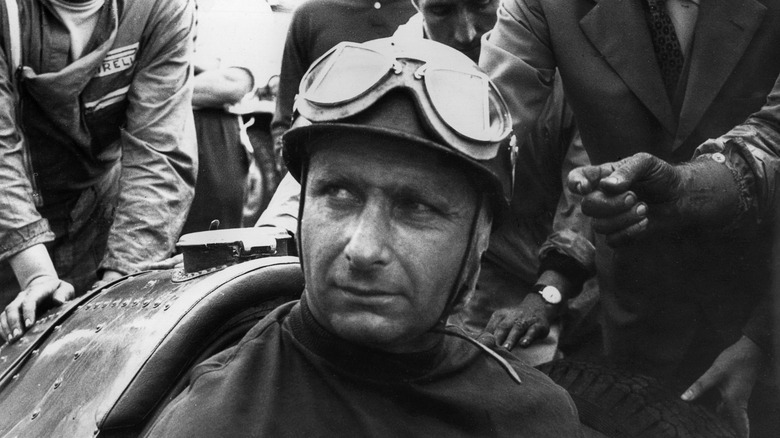The 10 Greatest Moments In F1 Racing History
Formula 1 is a sport that has changed a lot over the last 70 years. From the days of the simplistic Grand Prix racing cars to the modern machines that contain dozens of aerodynamic elements and advanced tech, Formula 1 is in many respects unrecognizable. However, there are still some elements that are just as important now as they were decades ago.
Firstly, the expensive F1 cars are the result of an entire team working together to produce a machine that is capable of truly staggering feats of performance. Secondly, truly skilled drivers can mean the difference between winning a race or languishing near the back of the grid. Without either of these factors, no team or driver would ever be successful, and it is when both the car and person behind the wheel are in perfect sync that the magic really happens.
Throughout the history of Formula 1, there have been many amazing moments when drivers managed to do something truly exceptional. They might have pulled off an unbelievable qualifying performance, had a spectacular race that won them a championship, or beaten all the odds just to cross the finish line. Whatever the case, these are the very best moments, showcasing the greatest spectacles the sport has ever offered.
Michael Schumacher's drive at Belgium in 1995
Michael Schumacher may not have the outright pace of the likes of Lewis Hamilton and Ayrton Senna, but he was still an incredibly skilled driver. He also had a lot of other qualities that made him such a formidable driver within Formula 1. The German racer was mentally determined and physically fit, allowing him to dig deeper and be better prepared for races. He also worked hard to get the best out of his team and took an innovative approach to testing and racing tactics.
Many of these attributes were on show during the 1995 Belgian Grand Prix. Rain heavily affected qualifying for the event, which led to Schumacher and Damon Hill qualifying far lower than was expected of them. Schumacher started the race in 16th place, the lowest position of his career, and eight places behind title rival Hill. Worst still, no one had ever won at this race, having qualified lower than 12th.
None of that stopped Schumacher from winning the race and putting himself in pole position for the championship. On a track that was constantly changing between wet and dry, Schumacher was able to quickly make his way to the front of the grid. Although he was accused of driving too aggressively, his ability to keep the car on the tracks on slick tires while it rained allowed him to eventually seal one of the most memorable victories of his career.
Niki Lauda returning after his near-death crash
Making his debut in 1971, Niki Lauda quickly emerged as a star in Formula 1. By 1975, he had won his first World Championship with Ferrari after a spectacular season and carried that form into the following year. However, his 1976 campaign hit a significant roadblock when Lauda crashed during the 1976 German Grand Prix at the Nürburgring. The incident almost killed Lauda, who was seriously burned as the car burst into flames and subsequently inhaled burning hot toxic fumes, which severely damaged his lungs.
Such was the extent of the driver's injuries that he was given the last rites and wasn't expected to survive. Despite all of this, Layda started to recover incredibly quickly and was able to get himself fit enough to compete at the 1976 Italian Grand Prix just 40 days later. This marked a miraculous return to health, although Lauda was scarred for life as a result of the burns and went on to suffer a variety of health problems in his later life.
Lauda's comeback saw him resume his battle with James Hunt — as depicted in the film "Rush" — but he lost the championship by a single point. Much of that was down to the fact that Lauda had missed two races and also pulled out of the Japanese Grand Prix due to torrential rain, conditions that he felt were too dangerous to race.
Max Verstappen's Red Bull debut win at 18
Anyone who has watched Formula 1 over the last few years will be well aware of Max Verstappen. The Belgian and Dutch driver has dominated the sport since winning his first World Championship title in 2021 in what was a hard-fought battle with Lewis Hamilton. He became one of the youngest champions in Formula 1 history and has since gone on to set numerous records while establishing a new precedent for racers.
That Max Verstappen became a successful Formula 1 driver is not a huge surprise. His father is the former Formula 1 racer Jos Verstappen, while his mother was a successful go-kart racer. Having had success in other single-seater series, Max Verstappen entered Formula 1 with Red Bull's junior team Toro Rosso at the age of just 17. That made him the youngest driver to ever enter a Formula 1 race. After a number of impressive races, he was chosen to replace Daniil Kvyat in the Red Bull Racing team for the 2016 Spanish Grand Prix.
The race began with an incredibly expensive crash between Lewis Hamilton and Nico Rosberg, taking them both out of the race. This allowed Max Verstappen to take the lead in the race with a strategy that contrasted with his teammate's. When he won, he became the youngest driver to finish on the podium, lead a lap, and win a race.
Jenson Button's rainy drive from last to first at Canada
Jenson Button may not be considered one of the best drivers of all time, but that doesn't mean that he hasn't had some magical moments during his long career in the sport. The British racer won the 2009 World Championship thanks to the dominance of the Brawn GP car and its innovative double diffuser. He later moved to McLaren and raced with the team alongside Lewis Hamilton and Fernando Alonso, showcasing his talents. Arguably his best race came in the 2011 season at the Canadian Grand Prix.
Having qualified in seventh position, Button made a reasonable start in wet conditions as several other drivers lost positions by running wide on the damp track. Partway through the race, he collided with teammate Hamilton, forcing him to retire. A few laps later, the race was suspended due to torrential rain and restarted behind the safety car. Not long after this, Button had a puncture that put him to the back of the grid with 30 laps remaining.
In the changing conditions, Button made a miraculous recovery drive. He went from last place to the points places in a handful of laps and caught up to Sebastian Vettel on the final lap. The German driver made a mistake on turn six, allowing Button to take the lead and hold on to win a spectacular race.
Ayrton Senna's 1988 Monaco qualifying lap
Ayrton Senna has an almost mythical reputation in the world of Formula 1 racing. The Brazilian driver joined Formula 1 in 1984 as part of the Toleman team before later moving to Lotus in 1985 and then McLaren in 1988, where he joined another legendary figure in the form of Alain Prost. The pair were closely matched throughout the season in one of the fastest F1 cars of all time, winning 15 out of the 16 races. Senna would eventually go on to win the season and earn the first of three World Championships while putting in a number of fine performances. However, none was more exceptional than his qualifying lap at the 1988 Monaco Grand Prix.
At the end of the session, Senna was some 1.4 seconds faster than his closest rival in Prost. This was made more remarkable by the fact that Prost was more experienced and had the same machinery. Often said to be the best-ever qualifying lap in the sport, it was not caught on camera, and there is no visual record of it. McLaren engineer Neil Oatley recalled to McLaren's official site how Prost's face had a "kind of ghostly look" after discovering how fast his teammate had gone. Meanwhile, Senna explained that he experienced an almost spiritual state during the lap.
"That day, I suddenly realised that I was no longer driving conscious," said Senna after qualifying. "And I was in a different dimension, for me. The circuit for me was a tunnel, which I was just going, going, going. And I [realized] I was well beyond my conscious understanding."
Michael Schumacher winning his seventh World Championship
It was clear from the very start of MIchael Schumacher's career that he was a talented driver who had the capability to rise to the very top. A successful kart racer from a young age, he first entered Formula 1 in 1991 at the Belgian Grand Prix racing for Jordan. An impressive display in qualifying led to him being signed to Benetton afterwards, a team he raced with until 1996, winning two World Championship titles with the team in 1994 and 1995.
In 1996, Schumacher signed a contract with Ferrari. This was an initial two-year deal for $60 million – making him one of the top-paid drivers in the sport. Schumacher and Ferrari were also able to convince Ross Brawn and other key members of the Benetton team. Despite having had limited success over the last two decades, Ferrari began to change its fortunes, but Schumacher didn't win another World Championship until 2000. Yet, Schumacher did come close several times and lost out in 1997 and 1998 when he was beaten in the final race of the season in each year.
From 2000, Ferrari and Schumacher experienced a period of dominance rivaled only by Mercedes and Lewis Hamilton in more recent times. Winning five consecutive titles, Schumacher amassed a record-breaking seven titles – a number that is yet to be beaten. This made Schumacher one of the most successful drivers and his win in 2004 cemented his place in Formula 1 history.
Lewis Hamilton's first World Championship win
It was clear from an early age that Lewis Hamilton was a talented racing driver. He was signed up to the McLaren Young Driver Programme in the late 1990s and made his Formula 1 in 2007 for McLaren. Despite being a rookie, he was able to go toe-to-toe with teammate Fernando Alonso and missed out on the championship that year by a single point. He also set a number of records in his first year in the sport, largely related to his young age, and he has since gone on to become the most successful driver in Formula 1 history.
While he faced disappointment in 2007, he didn't have to wait long until he landed his first World Championship win. The then 23-year-old fought an intense battle with Ferrari's Felipe Massa. By the final race in Brazil, the pair were separated by only seven points, with Hamilton leading with 94 points. Massa needed to win and have his rival finish in sixth place or lower.
That seemed to be exactly what was happening. Rain fell in the final minutes of the race, and while Massa was in first place, Hamilton was struggling to close in on Sebastian Vettel. However, in the final few moments, Hamilton was able to pass a slow moving Timo Glock – who hadn't stopped for wet tires — and take fifth place. Confusion followed as both McLaren and Ferrari teams celebrated until it was confirmed that Hamilton had done enough to become the youngest Formula 1 World Champion.
Ayrton Senna's masterclass at the 1993 European Grand Prix
When people think of Ayrton Senna, they might remember a few different moments. After all, he is a driver who often did inspired and seemingly impossible things, making his untimely death during a Formula 1 race even more tragic. Ranked highly among them is his performance at the 1993 European Grand Prix. Taking place at Donnington Park in the U.K., the race is famous for its changing conditions and unmatched performance by Senna. Having qualified in fourth place, he was fifth by the time the grid came to the first corner. Yet, he was somehow able to make his way to first place by the end of the first lap and retook the lead after a slow pitstop, showing his mastery of the wet and dry conditions.
The masterclass was similar to Senna's outstanding drive at the 1991 Brazilian Grand Prix. This marked the first time that Senna had won his home Grand Prix, but it may not initially seem all that impressive given that he started in pole position. However, Senna suffered a malfunctioning gearbox midway through the race, losing gears as the car started to act unpredictably. Eventually, he was left with just sixth gear to try and negotiate the Interlagos circuit. The effort was so great that when Senna finished the race, he had muscle cramps and had to be helped out of the car as he was unable to walk unaided.
Jack Brabham pushing his car over the finish line
Jack Brabham may not be as familiar a name as other multiple World Champions in Formula 1 but he remains one of its most successful drivers. The Australian entered the sport in the mid-to-late 1950s, competing with the Cooper team as a driver as well as a mechanic and engineer. This produced two consecutive titles in 1959 and 1960, with Brabham then leaving to race for other teams and even going on to set up his own Formula 1 racing outfit in the form of Brabham Motor Racing Developments. He went on to win the 1966 championship with his own team, an achievement that has never been matched since.
Perhaps the most famous and enduring moment of Brabham's career came at the 1959 United States Grand Prix. Held at the Sebring International Raceway, it was the final race of the season and set the stage for a three-way championship title decider between Brabham, Stirling Moss, and Tony Brooks. Not long into the race, Moss had to retire and Brooks seemed out of the running. However, disaster struck for Brabham on the final lap when his car ran out of fuel a few hundred yards before the finish line. Determined to be classified and earn the point needed to clinch the title, Brabham pushed his car up the hill to the finish line and ended up in fourth.
Juan Manuel Fangio's brilliance at the 1957 German Grand Prix
Argentine racing driver Juan Manuel Fangio had a stunning career during the 1950s. Starting long before other legendary figures such as Ayrton Senna, Michael Schumacher, and Lewis Hamilton, he has established a lasting legacy that has set him apart as one of the greatest racing drivers of all time. In seven seasons, Fangio won 24 of the 51 races that he started and walked away with five World Championships, having come second in the two other years he competed. That stood as the record for decades until Schumacher surpassed it.
Given his win percentage and huge success, there's little doubt that Fangio must have put in some great performances. After all, no one wins so many races and championships without being a truly exceptional driver who is capable of great things. Arguably, Fangio's best drive came at the German Grand Prix in 1957. Racing for Maserati, Fangio decided to go with a different strategy to the Ferrari team, who were planning on finishing the race without making a pit stop. That meant he could run his car lighter but also meant he would have to stop at some point to enter the pits and refuel.
This pit stop proved to be a calamity, and he was stuck in a stationary position for well over a minute. Fangio emerged 51 seconds behind his Ferrari rivals with just 10 laps remaining of the race. Yet, he was somehow able to claw back the deficit, breaking the lap record several times as he was several seconds faster than his opponents. What's more impressive is that Fangio managed this with a loose seat, which meant he had to brace himself while driving so he wouldn't move around the cockpit.
